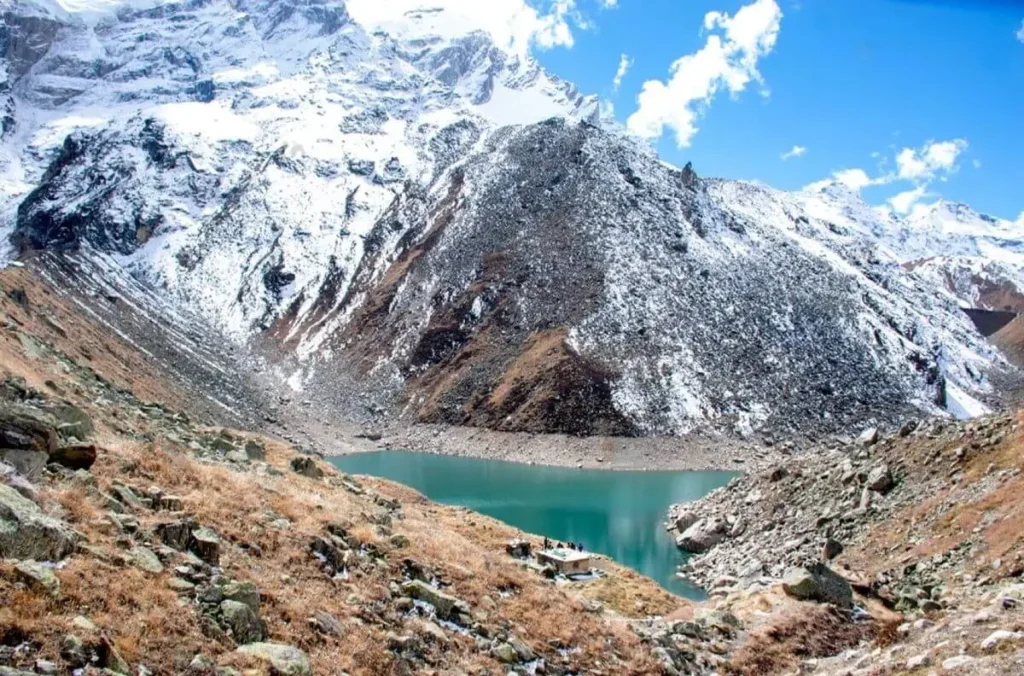
Nestled near the Indo-Tibetan border, Mana is a small but historically and spiritually significant village in Chamoli district, Uttarakhand. Known as the “First Village of India”, Mana lies just 3 kilometers from the revered Badrinath Temple and sits at an altitude of around 3,200 meters above sea level.
With its snow-clad mountains, mythological landmarks, and welcoming locals, Mana offers a unique blend of natural wonder and cultural richness. It’s not just a geographical location—it’s an experience at the edge of civilization.
Natural Beauty and Scenic Landscape
Surrounded by the majestic Garhwal Himalayas, Mana offers breathtaking views in every direction. The Saraswati River, originating from the glaciers nearby, flows through the village, creating an enchanting soundscape against the backdrop of rugged peaks.
In spring and summer, the region blooms with Himalayan flora, making it ideal for photography, nature walks, and peaceful reflection.
Places to Visit in and Around Mana
Bheem Pul
According to mythology, Bheem Pul is a natural rock bridge that Bheema of the Pandavas is believed to have placed across the Saraswati River to help Draupadi cross during their final journey to heaven (Mahaprasthan).
Vyas Gufa
This cave is believed to be where sage Ved Vyasa composed the Mahabharata with the help of Lord Ganesha. The cave is still preserved and revered by pilgrims and history enthusiasts alike.
Ganesh Gufa
Close to Vyas Gufa, this smaller cave is dedicated to Lord Ganesha, who is said to have written the Mahabharata as dictated by Vyasa.
Saraswati River Origin
Mana is one of the rare places where you can witness the Saraswati River before it vanishes underground. Its gushing flow is both powerful and spiritually significant.
India’s first Tea Shop
A charming stop for visitors, this humble tea stall proudly claims to be the First tea shop before the India-Tibet border. It’s a must-visit for a warm cup and a conversation with locals.
Cultural and Historical Significance
Mana is primarily inhabited by the Bhotiya community, who are of Tibetan descent. Their traditional lifestyle, stone houses, woolen clothing, and customs reflect their heritage.
The village holds deep roots in Hindu mythology. Legends from the Mahabharata, especially the Pandavas’ final journey, are closely associated with this region. Locals preserve these stories through oral traditions and rituals.
Activities and Experiences
- Trekking: Mana is a gateway to high-altitude treks like Satopanth Lake and Swargarohini, routes believed to lead toward the heavens as per mythology.
- Photography: With dramatic landscapes, traditional architecture, and vibrant people, Mana offers excellent photo opportunities.
- Pilgrimage Extension: Many Char Dham pilgrims make a brief visit to Mana after visiting Badrinath, making it a spiritual extension of their journey.
Best Time to Visit
| Season | Highlights |
|---|---|
| May to June | Pleasant weather, clear views, ideal for trekking and sightseeing |
| September to October | Post-monsoon clarity, fresh air, and fewer tourists |
| November to April | Closed due to heavy snowfall and extreme temperatures |
How to Reach Mana
- By Road: Mana is about 320 km from Rishikesh. Drive or take a shared taxi to Badrinath, then continue 3 km to Mana.
- By Train: The nearest railhead is Rishikesh Railway Station.
- By Air: The closest airport is Jolly Grant Airport, Dehradun. Taxis are available to Badrinath.
Travel Tips
- Carry warm clothing regardless of the season, as temperatures can drop sharply.
- Due to high altitude, acclimatize slowly and stay hydrated.
- Respect local traditions and ask before photographing people or shrines.
- Check weather and road conditions in advance, especially during the monsoon or late autumn.
- Avoid littering and help preserve this ecologically and culturally sensitive area.
Conclusion
Mana is more than just India’s last village—it’s a gateway to mythology, culture, and untouched Himalayan beauty. Whether you’re seeking spiritual insight, cultural connection, or the thrill of being at the frontier, Mana provides a once-in-a-lifetime experience.
For those who journey here, Mana is not the end of the road—it’s the beginning of something timeless.
